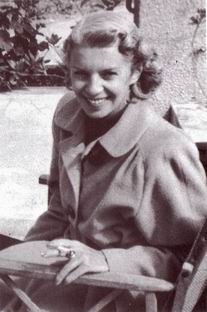
Benjamin Mazar was a pioneering Israeli historian, recognized as the "dean" of biblical archaeologists. He shared the national passion for the archaeology of Israel that also attracts considerable international interest due to the region's biblical links. He is known for his excavations at the most significant biblical site in Israel: south and south west of the Temple Mount in Jerusalem. In 1932 he conducted the first archaeological excavation under Jewish auspices in Israel at Beit She'arim and in 1948 was the first archaeologist to receive a permit granted by the new State of Israel. Mazar was trained as an Assyriologist and was an expert on biblical history, authoring more than 100 publications on the subject. He developed the field of historical geography of Israel. For decades he served as the chairman of the Israel Exploration Society and of the Archaeological Council of Israel. Between 1951 and 1977, Mazar served as Professor of Biblical History and Archaeology at the Hebrew University of Jerusalem. In 1952 he became Rector of the university and later its president for eight years commencing in 1953.

Menashe Kadishman was an Israeli sculptor and painter.
Naftali Herz Tur-Sinai was a Bible scholar, author, and linguist instrumental in the revival of the Hebrew language as a modern, spoken language. Tur-Sinai was the first president of the Academy of the Hebrew Language and founder of its Historical Dictionary Project.

The White City is a collection of over 4,000 buildings in Tel Aviv from the 1930s built in a unique form of the International Style, commonly known as Bauhaus, by German Jewish architects who fled to the British Mandate of Palestine from Germany after the rise to power of the Nazis. Tel Aviv has the largest number of buildings in the Bauhaus/International Style of any city in the world. Preservation, documentation, and exhibitions have brought attention to Tel Aviv's collection of 1930s architecture. In 2003, the United Nations Educational, Scientific and Cultural Organization (UNESCO) proclaimed Tel Aviv's White City a World Cultural Heritage site, as "an outstanding example of new town planning and architecture in the early 20th century." The citation recognized the unique adaptation of modern international architectural trends to the cultural, climatic, and local traditions of the city. Bauhaus Center Tel Aviv organizes regular architectural tours of the city.

Daniel Friedmann is a former professor at and dean of the Tel Aviv University Faculty of Law. He served as the Minister of Justice of Israel from 2007 to 2009, having been appointed by then-Prime Minister Ehud Olmert. He was sworn in on February 7, 2007, succeeding Tzipi Livni. In 2009 he was succeeded by Ya'akov Ne'eman.

Israel Eldad, was an Israeli Revisionist Zionist philosopher and member of the Jewish underground group Lehi in Mandatory Palestine.

Dov Feigin was an Israeli sculptor.
The architecture of Israel has been influenced by the different architectural styles of those who have inhabited the country over time, sometimes modified to suit the local climate and landscape. Byzantine churches, Crusader castles, Islamic madrasas, Templer houses, Arab arches and minarets, Russian Orthodox onion domes, International Style modernist buildings, sculptural concrete Brutalist architecture, and glass-sided skyscrapers all are part of the architecture of Israel.
Ram Karmi was an Israeli architect. He was head of the Tel Aviv-based Ram Karmi Architects company, and is known for his Brutalist style.

Heichal HaTarbut, officially known as the Charles Bronfman Auditorium and until 2013 as the Fredric R. Mann Auditorium, is the largest concert hall in Tel Aviv, Israel, and home to the Israel Philharmonic Orchestra.

Dov Sadan was an Israeli literary critic and politician who served as a member of the Knesset for the Alignment between 1965 and 1968.

Ada Karmi-Melamede is a noted Israeli architect.

Dora Gad was an Israeli interior designer, whose work had significant influence on the development of modern Israeli architecture.

Habima Square is a major public space in the center of Tel Aviv, Israel, which is home to a number of cultural institutions such as the Habima Theatre, the Culture Palace, and the Helena Rubinstein Pavilion for Contemporary Art. The square is at the intersection of Rothschild Boulevard, Hen Boulevard, Dizengoff Street, and Ben-Zion Boulevard.

David Resnick was a Brazilian-born Israeli architect and town planner whose awards include the Israel Prize in architecture and the Rechter Prize. Resnick, whose name is sometimes spelled in English as "Reznik" or "Reznick," is a past director of the Israeli Architects Association, and is known as one of Israel's "most celebrated modern architects".

Ze'ev Rechter (1899–1960) was a pioneering architect of Mandate Palestine and Israel, who designed many of Israel's iconic buildings. He is considered one of the three founding fathers of Israeli architecture, along with Dov Karmi and Arieh Sharon. Among his works, Rechter designed Binyanei HaUma, the Tel Aviv courthouse and the Mann Auditorium. He introduced the use of stilt columns known as piloti in residential housing in Israel.
Yaakov Rechter was an Israeli architect and an Israel Prize recipient. Strongly influenced by the works of Charles-Édouard Jeanneret, known as Le Corbusier, he was among Israel's architects who also modeled Tel Aviv on North African cities with "cubist-like flat roofs".

Genia Averbuch was an Israeli architect.
Ossip (Yosef) Klarwein was a Polish-born German-Israeli architect who designed many works in Germany and Israel. Between 1921 and 1933 he was employed with Johann Friedrich Höger, and became chief design architect. Klarwein was an important representative of Northern German Brick Expressionism and of modern architecture in Israel.

Shulamit Nadler was a prominent Israeli modernist architect best known for her design of the National Library of Israel.

















